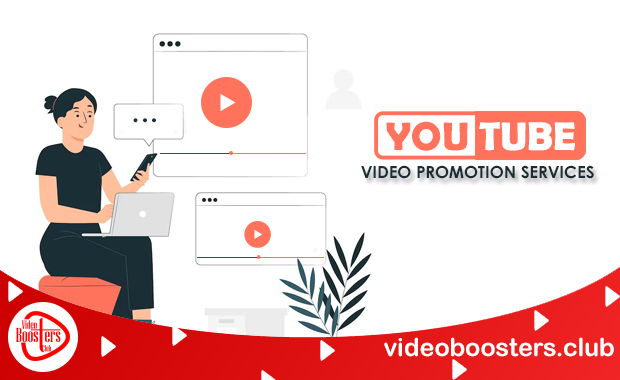
In the dynamic digital world, choosing the right video platform is important for content creators. Two of the most prominent platforms are YouTube and Vimeo, each offering unique features and benefits. This article deals with the intricacies of “YouTube vs Vimeo,” exploring which platform stands out for content creators looking to grow their audience, monetize their content, and ensure high-quality video delivery.
Why Choosing The Right Platform Is Important?
Selecting the right video hosting platform is more than a matter of preference; it can significantly impact your reach, engagement, and overall success as a content creator. Here’s why it’s essential:
- Audience Reach: Different platforms cater to varied audiences. Choosing the right one helps you target your content effectively.
- Monetization Opportunities: Platforms offer different monetization models, which can affect your earnings.
- Content Quality and Delivery: The quality of video playback and ease of access can enhance or hinder viewer experience.
- Community and Engagement: Platforms offer various tools for engaging with your audience, which can build a loyal viewer base.
- Analytics and Insights: Understanding your audience through robust analytics can guide your content strategy.
YouTube vs Vimeo: Check The Overall Differences
Understanding the core differences between YouTube and Vimeo is the first step in determining which platform best suits your needs.
1. Audience Reach and Size
YouTube: With over 2 billion logged-in monthly users, YouTube is the second most visited website globally, only after Google. Content creators can never get more exposure than this with such a large audience.
Vimeo: Vimeo has a smaller, more niche audience. It’s known for attracting a creative community, including filmmakers, artists, and professionals who value high-quality content.
2. Monetization Options
YouTube: Offers multiple monetization avenues, including ads, channel memberships, Super Chat, YouTube Premium revenue, and the Merch shelf.
Vimeo: Focuses more on subscription-based revenue models. Creators can sell or rent their videos directly to viewers or offer them through a Vimeo OTT (over-the-top) service.
3. Video Quality and Customization
YouTube: Provides high-definition playback but has limitations on video bitrates. It also includes pre and post-roll ads that may interrupt the viewing experience.
Vimeo: Known for superior video quality and more control over video customization. Vimeo does not include ads, providing a cleaner viewing experience.
4. Analytics and Insights
YouTube: Offers comprehensive analytics, including watch time, audience demographics, and engagement metrics. These insights are crucial for tailoring content to your audience.
Vimeo: offers thorough analytics with a stronger emphasis on the engagement and behavior of viewers. Vimeo’s advanced analytics are particularly beneficial for professionals and businesses.
5. Community and Engagement
YouTube: Includes community posts and a strong commenting system that let authors communicate with viewers directly. YouTube algorithm also helps in discovering new content.
Vimeo: The community is smaller but highly engaged. Vimeo offers features like video review tools, which are ideal for collaborative projects.
6. Pricing
YouTube: Free to use, with additional features available through premium subscriptions.
Vimeo: Offers a free plan with limited features, but most creators opt for paid plans to access higher video quality, increased storage, and advanced tools.
YouTube or Vimeo: Which Is Better For Video Content Creators?
Now that we’ve explored the fundamental differences between YouTube and Vimeo, let’s get deeper into which platform might be better suited for different types of content creators.
1. Aspiring YouTubers and Influencers
For creators looking to build a broad audience quickly, YouTube is the preferred platform. Its extensive reach and powerful algorithm can help your content gain traction faster. Additionally, YouTube’s diverse monetization options make it easier to start earning from your videos.
Pros:
- Massive audience potential
- Multiple monetization options
- Strong community engagement tools
- Extensive analytics and insights
Cons:
- Highly competitive
- Ad interruptions
- Limited control over video presentation
2. Professional Filmmakers and Artists
Vimeo is the go-to platform for filmmakers and artists who value presentation and quality of video content. Its ad-free experience and advanced customization options allow creators to showcase their work in the best possible light. Moreover, Vimeo’s subscription and OTT models provide a reliable income stream for professional content.
Pros:
- Superior video quality
- Ad-free viewing experience
- Advanced customization and privacy settings
- Niche, engaged audience
Cons:
- Smaller audience reach
- Fewer direct monetization options
3. Businesses and Marketers
Businesses looking to use video as a marketing tool can benefit from both platforms, depending on their goals. YouTube is excellent for reaching a large, diverse audience and generating brand awareness. Vimeo, on the other hand, is perfect for storing outstanding videos that demonstrate the expertise and uniqueness of the brand.
YouTube for Businesses:
- Wide reach for brand exposure
- Effective for SEO and search visibility
- Comprehensive analytics for tracking ROI
Vimeo for Businesses:
- High-quality video presentation
- Better control over branding and customization
- Suitable for professional presentations and client work
Conclusion
Choosing between YouTube and Vimeo ultimately depends on your specific needs as a content creator. YouTube offers unparalleled reach and multiple monetization options, making it ideal for creators aiming for mass appeal and rapid growth. Vimeo is a platform that attracts to professionals and artists who appreciate presentation and engagement from specific audiences because of its excellent video quality and flexible options.
Both platforms have their unique strengths, and understanding these can help you make an informed decision that aligns with your content goals and target audience.
FAQ
1. Can I post content on Vimeo and YouTube at the same time?
Yes, many creators use both platforms to leverage the strengths of each. You can use YouTube for broader reach and engagement, while Vimeo can serve as a portfolio for high-quality videos.
2. Which platform is better for SEO?
YouTube is better for SEO because it is owned by Google, and videos hosted on YouTube are more likely to appear in Google search results.
3. Do both platforms support live streaming?
Yes, both YouTube and Vimeo support live streaming. However, YouTube’s live streaming is more accessible and has a broader audience, while Vimeo offers advanced features and higher quality.
4. How much does it cost to use Vimeo?
Vimeo offers several pricing plans, starting from free with basic features to premium plans that provide advanced customization, higher storage, and additional tools.
5. Which platform offers better analytics?
Both platforms offer robust analytics, but YouTube provides more detailed insights on audience demographics and engagement, which can be beneficial for optimizing content and growing your channel.


